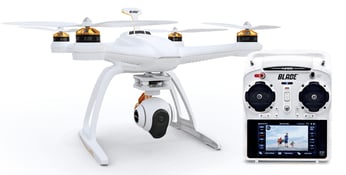Have you seen a drone today? A “yes” answer may become more common than you think as soon as this Christmas. Besides, who wants a “selfie stick” when you can have a drone.
 More than 1 million drones are expected to be sold this Christmas, according to a recent announcement by the FAA. That number scares the government and has led the FAA to develop plans to help major retailers like Wal-Mart educate consumers on responsible use at stores this holiday season. As the owner of a couple drones myself, I can attest that they are fun, but not as easy to fly as they look.
More than 1 million drones are expected to be sold this Christmas, according to a recent announcement by the FAA. That number scares the government and has led the FAA to develop plans to help major retailers like Wal-Mart educate consumers on responsible use at stores this holiday season. As the owner of a couple drones myself, I can attest that they are fun, but not as easy to fly as they look.
The most commonly used drones, particularly for business use, cost between about $400 and $1,200. However, the consumer market has exploded with a spectrum of “drone-like” devices. Wal-Mart, alone, currently advertises 19 different “drones” online at a far lower price point. My family and I have used a series of drones or quadcopters that do not use First Person View (FPV) for about three years. I bought my first FPV drone last year. Check out this live footage I captured recently.
The use of FPV drones, also known as unmanned aerial vehicles (UAVs), is quickly growing among schools, government agencies, farmers and businesses. The Minnesota Department of Transportation, which received national attention in 2007 when the I-35W Bridge collapsed over the Mississippi River, is currently studying how drones can be used to more effectively and safely inspect bridges for defects. Rwanda could have the first drone port, designed to support cargo drones capable of delivering urgent supplies to remote areas.
New Features
The technology of these drones is continuing to advance with two major manufacturers, Blade and DJI, leading the charge. Here’s a look at some of the newer features:
- First Person View Camera: The First Person View (FPV) technology allows users to fly drones wearing a pair of goggles. The drone feeds the camera view to screens on the goggles to create the feeling like you are actually flying in the sky.
- Camera Quality: The resolution of the higher-end models is 4K, the new standard in cinematography. This heightened resolution, combined with the First Person View capabilities, are making it easier to capture high quality shots.
- Wind Sensors: A new sensor package now allows drones to automatically compensate for wind, improving safety, usability and the quality of the imagery.
- Google Maps Compatibility: The ability to link to Google Maps and create a route makes it so users do not even need to fly the drone. Instead, they tap spots to capture images along a route, click go and the drone automatically goes to work.
- Fly from Your Mobile Device: The newer drone models also can be operated from a smartphone or tablet by downloading an app.
Many of the larger FPV drones come with firmware that caps the height at 400 feet and prevents the drone from flying into airspace around airports and other restricted areas.
Regulation Rising
While regulation exists, it has been slow to unfold due to the many different aspects that need to be addressed. That is expected to change – quickly – as more drones take to the skies for both consumer and commercial use. Currently flying drones for commercial use is illegal without FAA approval. That has given way to a newline of drone-for-hire businesses.
The concern by the FAA is warranted. Drones are not as easy to fly as they look. They are considered pilotless aircrafts and require a level of expertise.
Seeing the future implications, the NFL recently received approval by the FAA to use drones. The use is currently limited and does not include game days, but that is expected to change.
Where will you see a drone next? The applications are boundless, drawing in everyone from realtors, inspectors, architects, engineers and farmers to schools, sports groups and growing businesses. They are providing a new way to complete business functions, create a more engaging user experience and develop a marketing edge.